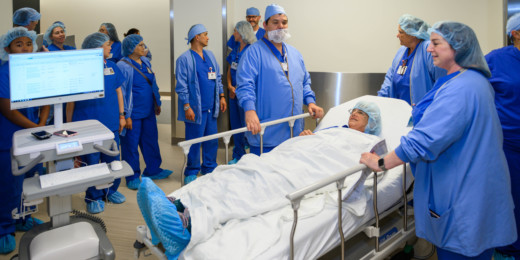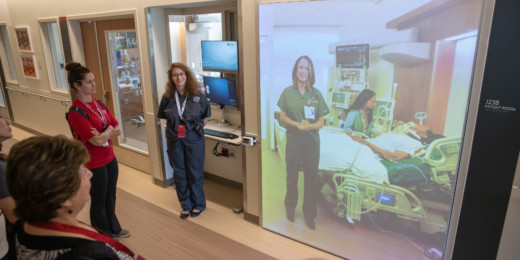I imagine few hospital CEOs can say that they have personally experienced their intensive care unit -- as a patient.
Yet, that is my experience, and I am forever grateful for what it taught me about hospitals and the role that technology can play in supporting patients.
On a Saturday morning in May 2009, I was competing in the Stansbury Park triathlon in Utah. Roughly 20 miles into the race, for reasons that still aren't clear, I crashed. I flipped over my bike's handlebars and slammed into the pavement at roughly 23 miles per hour. When a computerized tomography scan showed that I had a traumatic brain injury, I was transported by life flight to the University of Utah hospital where I was the CEO at the time.
More than a week passed in the intensive care unit before I finally regained consciousness and embarked on a slow and challenging recovery. It was during this recovery that I first saw my hospital through the eyes of a patient and experienced what it felt like to be completely dependent on the care of others. It was humbling.
I came to value a few simple things during my stay: when someone took the time to explain why they were doing a certain procedure at the bedside; when someone anticipated what I might need to feel more comfortable; and especially when I received an update about when I could expect to return home.
As a patient, I learned that these small gestures can make a world of difference. I also learned the power of empathy -- how you can help someone immensely by simply being present and attuned to their needs. These are lessons that will always remain with me.
It has been a decade since my injury, and the field of health care has continued to rapidly evolve in that time. We're now living in an era where digital technologies -- from health apps to internet-connected sensors and devices -- are starting to change how patients experience health care. At Stanford, we are embracing this future.
We believe that digitally-driven health care, guided by empathy, will help care teams better anticipate their patients' needs and will create more space for high-touch care -- the things I valued most as a patient.
Nowhere is this more visible than at our new Stanford Hospital, which opens a week from Sunday. In every detail, we have strived to create a seamless experience that thoughtfully brings the virtual and physical worlds together to better support our patients.
Patients, for example, will have access to a Guided Journey app that empowers them at the bedside. Patients can use the app to view their clinical itinerary, contact care team members, track important goals for discharge, request room service and remotely control their environment -- from lighting to temperature to entertainment. Family members can use this app, too, to track their loved one's progress and access important information for planning care at home.
For every patient-facing technology at our new hospital, there are dozens more beneath the surface that are designed to enhance the patient experience. Features like a mobile care-coordination platform for our medical staff will enable them to stay in constant contact about each patient's health status and their in-the-moment needs. Patients won't see this, but they will feel the difference at the bedside.
This digitally-connected experience continues well after a patient arrives home. Using our mobile app MyHealth, patients can manage prescriptions, schedule appointments, review test results and have virtual follow-up visits with their doctors -- all from the comfort of home. And should a patient need to come back on campus, the same MyHealth app will navigate them to their appointment and alert the care team once they arrive so that they can skip the waiting line. From end to end, we are using digital technologies that put patients at the center of the care experience.
Technology can't come close to substituting the bond that patients form with their care teams, nor should that be the aim. But applied in smart ways, technology can make these relationships even stronger by empowering people, enhancing communication and helping care teams stay constantly connected to their patients.
This is a future to look forward to: one that I believe will bring human compassion to the forefront of patient care and support the experiences that meant the world to me in my own time of need.
David Entwistle is the president and CEO of Stanford Health Care. Before joining SHC in July 2016, he served for nine years as CEO of the University of Utah Hospital & Clinics. Entwistle is an avid cyclist who enjoys both road and mountain biking, and competes in Ironman Triathlons.
Photo courtesy of David Entwistle






